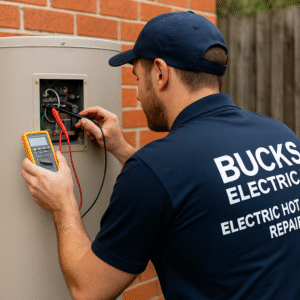system. Many homeowners underestimate the importance of a properly functioning panel until they experience frequent breaker trips, outdated wiring, or the inability to power modern appliances. Understanding the cost to change electrical panel is essential for effective budgeting and ensuring the long-term reliability of your home’s electrical system.
This article will explain the key factors that determine the cost to change electrical panel, why replacements are necessary, and how homeowners can plan for a safe and cost-effective upgrade.
Why Replace Your Electrical Panel?
The electrical panel, also known as a breaker panel or service panel, is the hub of your home’s electrical system. It distributes electricity to all circuits, protects your home from overloads, and ensures appliances and devices run safely.
Over time, electrical panels can become outdated or insufficient, especially in homes built decades ago. Replacing your panel provides multiple benefits:
-
Safety: Older panels can overheat, cause breaker trips, or even pose fire risks.
-
Capacity: New panels support high-powered appliances, EV chargers, and modern electronics.
-
Code Compliance: Ensures your system meets local building codes and safety regulations.
-
Future-Proofing: New panels provide extra capacity for future expansions and upgrades.
Knowing the cost to change electrical panel helps homeowners prepare financially while understanding the value of a modern, safe electrical system.
Factors That Affect the Cost to Change Electrical Panel
The cost to change electrical panel can vary widely depending on several factors. Let’s break down the key elements that influence pricing:
1. Panel Size
The amperage of your electrical panel is one of the largest factors in determining cost. Common panel sizes include:
-
100-amp panels: Typically suitable for older homes with basic electricity needs.
-
150–200 amp panels: Standard for modern homes with multiple appliances and smart devices.
-
400-amp panels: Ideal for large homes, homes with workshops, or properties requiring EV chargers.
Larger panels require more breakers, wiring, and labor, increasing the overall cost to change electrical panel.
2. Type of Panel
The type of panel you select also affects cost:
-
Standard Load Centers: Affordable and sufficient for most homes.
-
Main Breaker Panels: Provide added safety with a main shut-off switch.
-
Main Lug Panels: Typically more cost-effective but need a separate disconnect.
-
Smart Panels: Feature energy monitoring, surge protection, and remote management, generally costing more.
Selecting the right type ensures your cost to change electrical panel estimate is accurate and fits your home’s needs.
3. Labor Costs
Labor accounts for a significant portion of the cost to change electrical panel. Factors include:
-
Electrician Rates: Hourly rates vary depending on location, experience, and licensing.
-
Project Complexity: Panels that require new wiring, circuit relocation, or relocation of the panel itself take longer to install.
-
Permit and Inspection Handling: Licensed electricians often manage permits, adding to labor costs.
Hiring a professional ensures safety and compliance but directly influences the overall cost to change electrical panel.
4. Material Costs
Material costs include the panel, breakers, wiring, connectors, and safety components:
-
Panel Size and Brand: Larger panels or premium brands cost more.
-
Wiring Upgrades: Older or damaged wiring may need replacement to accommodate a new panel.
-
Safety Features: Surge protectors, grounding rods, and updated breakers add to material expenses.
High-quality materials may increase your cost to change electrical panel, but they provide long-term reliability and safety.
5. Home Location and Accessibility
Where your home is located and how accessible your panel is can impact costs:
-
Urban vs. Rural: Labor rates and permit fees differ by region.
-
Panel Accessibility: Panels in basements, tight spaces, or behind obstructions require additional work.
-
Local Electrical Codes: Regulations can affect installation complexity and cost.
These factors cause variability in the cost to change electrical panel from one home to another.
6. Additional Electrical Work
Sometimes, replacing a panel involves extra work that influences cost:
-
Rewiring Circuits: Old or undersized wiring may require upgrades.
-
Adding Dedicated Circuits: High-demand appliances and EV chargers often need separate circuits.
-
Panel Relocation: Moving the panel to a more convenient or compliant location adds labor and materials costs.
Accounting for these tasks ensures your cost to change electrical panel estimate is accurate.
7. Permit and Inspection Fees
Most municipalities require permits and inspections for panel replacements:
-
Permit Costs: Typically range from $50 to $500 depending on local regulations.
-
Inspections: Ensure compliance with electrical codes and safety standards.
Including these fees in your budget ensures that the cost to change electrical panel reflects the full scope of the project.
8. Age and Condition of Your Electrical System
Older homes often have outdated panels, aluminum wiring, or insufficient grounding. These conditions can increase labor and material requirements:
-
Outdated Panels: May require complete replacement rather than a partial upgrade.
-
Aluminum Wiring: May need replacement for safety.
-
Grounding and Surge Protection: Homes may require additional work to meet current safety codes.
Newer homes with updated electrical systems generally have lower cost to change electrical panel estimates.
Average Cost to Change Electrical Panel
The cost to change electrical panel varies widely, typically ranging as follows:
-
100-amp panel: $1,000–$1,500
-
150–amp panel: $1,200–$2,000
-
200-amp panel: $1,500–$3,000
-
400-amp panel: $2,500–$5,000+
These ranges include labor, materials, and permits but can increase with additional work such as rewiring or panel relocation.
Tips for Budgeting Your Electrical Panel Replacement
-
Get Multiple Quotes: Comparing licensed electricians ensures competitive pricing.
-
Plan for Future Needs: Include additional circuits or capacity for EV chargers and smart home devices.
-
Include Optional Safety Features: Surge protection and modern breakers improve reliability.
-
Research Local Costs: Labor, permits, and material costs vary by region.
-
Hire Licensed Professionals: Ensures safety, compliance, and reduces long-term costs.
By considering these tips, homeowners can effectively manage the cost to change electrical panel while ensuring a safe and reliable system.
Benefits of a Proper Panel Replacement
Replacing your electrical panel provides several advantages:
-
Safety: Reduces risk of fire, electrical shocks, and circuit overloads.
-
Energy Efficiency: Supports efficient operation of appliances and modern devices.
-
Home Value: Upgraded panels increase resale value and attract buyers.
-
Convenience: Allows multiple devices to operate simultaneously without tripping breakers.
-
Future Expansion: Provides extra capacity for new appliances, EV chargers, or smart home technology.
Investing in a professional panel replacement ensures you reap these long-term benefits.
Conclusion
Understanding the cost to change electrical panel is crucial for homeowners planning an electrical upgrade. Factors such as panel size, type, labor, materials, location, additional work, permits, and home condition all influence the final cost.
Proper budgeting ensures that homeowners can safely replace their panels, enhance efficiency, and support modern electrical demands. Partnering with experienced professionals guarantees that your cost to change electrical panel investment delivers safety, reliability, and long-term value.
For expert evaluation, installation, and safe, code-compliant service, Madison Electric Company provides trusted solutions, ensuring your cost to change electrical panel aligns with real-world requirements while delivering high-quality results for your home’s electrical system.

